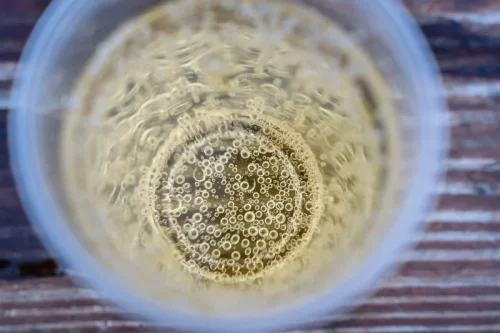
The early warning signs of an alcohol problem can be hard to recognize because some symptoms can overlap with what are considered normal teen behaviors. The more we know about how alcohol affects the teenage alcoholism adolescent brain, the more we can inform the conversations about alcohol that we have with teens. Screening youth for alcohol use and AUD is very important and may prevent problems down the road.
Teenage Substance Use Statistics
As we navigate this treacherous terrain, it’s crucial to stay informed about emerging trends in teen addiction. From the latest designer drugs to new forms of tech-based dependencies, the landscape is constantly shifting. Parents, educators, and healthcare providers must remain vigilant and adaptable in their approach to prevention and treatment. In addition to the many negative health impacts that are caused directly by drinking, young drinkers are especially vulnerable to fatalities related to alcohol abuse.

Ramifications of Underage Alcohol Use
Longitudinal studies with very large sample sizes are currently underway and may help to answer these important issues (48–50). Adolescence is a critical developmental phase involving significant physical, cognitive, emotional, social, and behavioral changes. Cognitive features of adolescence include heightened reward sensitivity, sensation seeking and impulsive action, and diminished self-control to inhibit emotions and behaviors (1, 2). This contributes to the high rates of engagement in risky behaviors, including the initiation and escalation of alcohol use.
Tips to change your relationship with alcohol
A prospective four-year study measured within-subject changes in brain volume for males and females. In a sample of 113 alcohol-naïve adolescents aged 11 to 16 at baseline, 45 went on to binge drink before turning 21. Binge drinking throughout adolescence predicted altered frontostriatal white matter microstructural development when compared to developmental trajectories of non-using healthy adolescents (70). Mixed findings were reported for the specific effects of alcohol, with two studies reporting that heavy drinking predicts worsening white matter integrity (71, 72) with either no effect (71) or added effect (72) of co-occurring cannabis use.
Research has improved our understanding of factors that help buffer youth from a variety of risky behaviors, including substance use. Either directly or indirectly, we all feel the effects of the aggressive behavior, property damage, injuries, violence, and deaths that can result from underage drinking. This is not simply a problem for some families—it is a nationwide concern.
- Also known as the Treatment Referral Routing Service, this helpline provides 24-hour, free, confidential treatment referral and information about mental and/or substance use disorders, prevention, and recovery in English and Spanish.
- It’s important to go over any issues you’ve discussed about the dangers of alcohol – and make sure you stick to the rules and consequences you’ve agreed.
- Therefore, animal studies can provide helpful insight into knowledge gaps from human literature on consequences of adolescent alcohol use.
- Better understanding the dose-dependent effects of substances will enable improved public health information to inform policies regarding limiting amounts of adolescent use and controlling potency of substance-containing products.
- The prevalence of teen addiction is staggering, with studies showing that nearly one in eight teenagers struggle with substance abuse or behavioral addictions.
High-Risk Substance Use Among Youth
Increased secrecy, new friend groups, or unexplained need for money should also raise eyebrows. Alcohol use disorder can include periods of being drunk (alcohol intoxication) and symptoms of withdrawal. If you have a friend whose drinking concerns you, help them stay safe. If you can, try to keep friends who have been drinking from doing anything dangerous, such as trying to walk home at night alone or starting a fight. Don’t get in a car with someone who’s been drinking, even if that person is your ride home.
- In the US, 4% and 14% of US adolescents aged 14 and 18, respectively, report binge drinking in the previous two weeks (42).
- Some of the existing studies also used ranges for self-report questionnaires, which weakens the ability to understand dose-dependent relationships.
- Despite this, teenage alcoholism is a very real and common problem.
- Alcohol often produces rewarding feelings such as euphoria or pleasure that trick the brain into thinking the decision to drink alcohol was a positive one and that motivate drinking again in the future.
Risks Of Teenage Drinking

The widespread changes in the organization and functioning of the brain—which continue into a person’s mid-20s—bring about the cognitive, emotional, and social skills necessary for adolescents to survive and thrive. The nature of these rapid changes may also increase the adolescent brain’s vulnerability to alcohol exposure. Create an environment where your teens feel safe talking to you about anything, including their struggles with substances or addictive behaviors. Preventing and addressing teen addiction isn’t easy, but it’s not impossible either. It takes a village, as they say, and in this case, the village includes parents, schools, healthcare providers, and the community at large.

Parents, educators, healthcare providers, and community leaders all have a role to play. It’s about creating a safety net, a support system that can catch teens before they fall too far and help lift them back up when they stumble. Family-based interventions are another crucial piece of the puzzle. Open communication, clear boundaries, and a supportive home environment can go a long way in preventing addiction. And if addiction does take hold, family therapy can be a powerful tool for recovery. Sudden drops in academic performance, skipping school, or losing interest in activities they once loved are all potential warning signs.
Preventing Underage Drinking

And let’s face it, “recovering addict” isn’t exactly a selling point on a resume. The economic impact of addiction can follow a person for years, even decades. But the digital age has ushered in a whole new category of addictions. https://ecosoberhouse.com/ Gaming addiction, once dismissed as a mere hobby gone overboard, is now recognized as a serious issue. Teens can lose themselves in virtual worlds, neglecting school, relationships, and even basic self-care.
